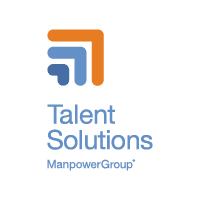By Simon Crichton, Brand Leader and Operations Director for Experis UK. This article was originally published as a guest blog on techUK.
As artificial intelligence becomes ever more high profile and enmeshed in business activity, it is creating new efficiencies but also driving an urgent need for more skilled workers to handle these advanced technologies.
We must remember that businesses have incorporated artificial intelligence (AI) into their operations since at least the early 1980s. Many of these early AI utilisations were basic, prone to error and provided minimal economic impact. However, the launch of ChatGPT in late 2022 was a game-changer; the technology has underpinned the rapid progression and implementation of generative AI across almost every business sector, transforming the ways that businesses function and creating new efficiencies whilst also challenging existing workforce dynamics.
Generative AI has quickly evolved from being a novel technological advancement to a cornerstone of business activity. Industries ranging from healthcare and finance to logistics and manufacturing are now harvesting the potential of AI technologies.
As expected, the widespread adoption of AI is also reshaping the roles of many human workers, with some tasks becoming automated and others requiring enhanced collaboration between humans and AI systems. In consequence, the demand for AI expertise is soaring, highlighting the urgency for a skilled workforce capable of navigating and leveraging these advanced technologies.
AI – moving too fast for recruitment to keep up
Unfortunately, even as the integration of AI into business activities grows at an almost exponential rate, companies are strugglingto attract and retain workers with the necessary expertise in AI and related technologies. Put simply, the demand for AI talent outstrips supply and the shortage is being exacerbated by the rapid pace of AI advancements and their application in different situation. In a constant game of catch-up, the continuous development of AI technologies requires continuous learning and adaptation from employees with the right skillset.
Blending the human with the artificial – the future of the workforce
Recruiting AI talent is not just about finding individuals with technical skills; it also involves identifying those who can apply these skills creatively and strategically within the business context and adapt to the advancements in the technology. Retention is a further hurdle, as professionals who have become skilled in AI are constantly bombarded with lucrative offers from competing firms.
If they are to succeed in the AI era, organisations must create and maintain compelling value propositions to attract and retain technically skilled talent. This means providing opportunities for professional growth, ensuring that the work and working environment remains stimulating and offering competitive compensation packages.
Looking further forwards, the optimal workforce will incorporate a delicate blend of technical and human-focused skills. On the technical side, proficiency in programming languages, data analysis, machine-learning algorithms and AI model development will be essential. Knowledge of cloud computing, cybersecurity and ethical AI practices will also be important as these technologies become more integrated into business processes.
On the human side, skills such as creativity, critical thinking, emotional intelligence and problem-solving will be equally important. These skills will enable individuals to work effectively alongside AI systems, making nuanced decisions and adding a human touch when automation falls short. The ability to continuously learn and adapt will be the most critical skill, as the rapid evolution of AI technologies will require workers to update their knowledge and competencies regularly.
Building tomorrow’s AI talent, today
To bridge the AI skills gap, organisations must urgently invest in reskilling and upskilling their workforce. Effective strategies could include:
Structured training programmes: implementing training programmes that cover both fundamental and advanced AI concepts.
Mentorship and peer learning: establishing mentorship programmes where experienced AI professionals guide less experienced colleagues.
On-the-job training: providing opportunities for employees to work on real AI projects, gaining hands-on experience and practical insights.
Partnerships with educational institutions: collaborating with universities and technical schools to ensure a steady pipeline of skilled graduates.
Continuous learning platforms: encouraging the use of online learning platforms that offer a wide range of AI courses, enabling employees to learn at their own pace.
Businesses must also cultivate an environment where experimentation, creativity and continuous improvement are encouraged:
Encourage open communication: promote a workplace where ideas can be freely exchanged and employees feel comfortable sharing their thoughts and suggestions.
Provide resources for experimentation: allocate time and resources for employees to explore new ideas, conduct experiments and develop innovative solutions.
Recognise and reward innovation: implement recognition programmes that celebrate innovative contributions and reward employees for their creative efforts.
Leadership support: ensure that leadership champions innovation by setting a vision, providing support and leading by example.
Collaborative workspaces: design workspaces that facilitate collaboration and creativity, such as open offices, innovation labs and virtual collaboration tools.
Strategic partnerships are essential to solve the talent problem
Developing a robust AI talent pipeline will also require strategic partnerships between educational institutions, tech companies and governments. Educational institutions can play a crucial role by offering relevant courses and research opportunities in AI. Tech companies can provide practical insights, internships and resources to support these educational initiatives. Governments can support these initiatives by offering funding, creating supportive policies and establishing public-private partnerships.
The human element
Lastly, we must keep sight of the fact that in the AI-driven workplace, human skills remain indispensable. Whilst AI can efficiently handle repetitive and data-intensive tasks, it currently lacks the ability to fully replicate human creativity, empathy and complex problem-solving abilities. This means it is crucial that businesses view AI as a tool to augment, rather than replace, human capabilities.
Ultimately, the integration of AI into the workforce presents both opportunities and challenges. If they take the right steps, maintain the guardrails and invest in the skills of their employees, organisations can successfully navigate the AI era to create a future where humans and AI can work harmoniously together. Learn more about Building a People-First Strategy for AI Powered Productivity. Download the whitepaper or watch the webinar now.


